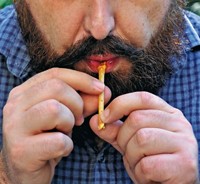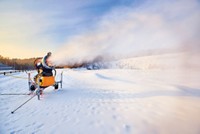Advertisement
Grab your lab coat. Let's get started
Welcome!
Welcome!
Create an account below to get 6 C&EN articles per month, receive newsletters and more - all free.
It seems this is your first time logging in online. Please enter the following information to continue.
As an ACS member you automatically get access to this site. All we need is few more details to create your reading experience.
Not you? Sign in with a different account.
Not you? Sign in with a different account.
ERROR 1
ERROR 1
ERROR 2
ERROR 2
ERROR 2
ERROR 2
ERROR 2
Password and Confirm password must match.
If you have an ACS member number, please enter it here so we can link this account to your membership. (optional)
ERROR 2
ACS values your privacy. By submitting your information, you are gaining access to C&EN and subscribing to our weekly newsletter. We use the information you provide to make your reading experience better, and we will never sell your data to third party members.
Climate Change
Newscripts
From snow to stones, the science we learned during the Olympic Games
by Laura Howes
February 27, 2022
| A version of this story appeared in
Volume 100, Issue 8
Snow business

This year’s Winter Olympics has drawn to a close and we are all turning our attention to the Winter Paralympics in March. A perfect time, Newscripts decided, to take a sideways look at some of the medal-winning science that made the games in Beijing possible.
One of the key innovations, much covered in the news, was the reliance on artificial snow to build the slopes and half-pipes for the snow sports. As C&EN foretold, the 2022 Winter Olympics relied almost entirely on snowmaking, but not because of the temperature. Instead, the issue in Beijing is the lack of seasonal precipitation. Snowmakers in Beijing did not have to rely on chemical nucleators to produce the snow, as many winter sports venues do, just good old-fashioned cold nights to freeze the water shot into the air by machinery. That means that what the 2022 games needed is water—and lots of it. Before the games, China estimated it would need around 222 million L of water to create the snow for the Alpine events alone.
Slippery Slopes is a recent report from Loughborough University, and fun title aside, the conclusions are alarming. These days, the report says, 95% of ski resorts globally rely on artificial snowmaking to either ensure good snow conditions or prolong the ski season. By 2050, the authors conclude, climate change will mean that many Winter Olympic venues will not be viable. At least, not without help. Luckily, the athletes in Beijing seem to have enjoyed the snow there so far. Here’s hoping both that the conditions in Beijing remain as good for the Paralympians and that our dreams of a snowy winter wonderland don’t turn to slush.
Stone cold science
It’s not just snow at the games, though; ice-based sports are also a joy. Take curling, in which two teams take turns sliding heavy, polished granite rocks (called stones) across the ice toward a circular target. One player sets the stone in motion, while team members desperately sweep in the stone’s path. The sweepers are not cleaning up; rather, they are melting the ice to help direct the stone toward its target.

While Newscripts understands the science behind melting ice to affect the friction and forces on the stone, we hadn’t given much thought to the science of the stone itself.
It turns out that all the stones used in Beijing during this year’s Olympic and Paralympic Games come from the same quarry on a small island off the coast of Scotland called Ailsa Craig. The magma that formed the stones was particularly low in aluminum, which led to uncommon minerals, such as arfvedsonite, aegirine, and aenigmatite in the granite, Newscripts learned from a blog post by Robert Gooday, an earth systems analyst at National Museums Scotland. “For some reason (we are still not sure why) these minerals, along with more common granite minerals such as feldspar and quartz, make the rock very tough and resistant to chipping and cracking,” Gooday writes, so Ailsa Craig granites are ideal for curling stones.
Virtual slide
With COVID-19 lockdowns and travel restrictions, how did Olympians prepare for the games? The German men’s bobsled team trained using a simulator in a Munich office building. Built by BMW using a platform usually reserved for racing cars, the simulator allowed the team to practice the Beijing course without ever leaving Germany.
Newscripts is more accustomed to thinking about how virtual reality might be used in the chemistry classroom, but we can’t help but hope that the team will sell tickets to try out the simulator after its victories. We’d be very interested in how it feels—for science, of course.
Please send comments and suggestions to newscripts@acs.org.





Join the conversation
Contact the reporter
Submit a Letter to the Editor for publication
Engage with us on Twitter